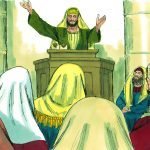
John Wesley Biography
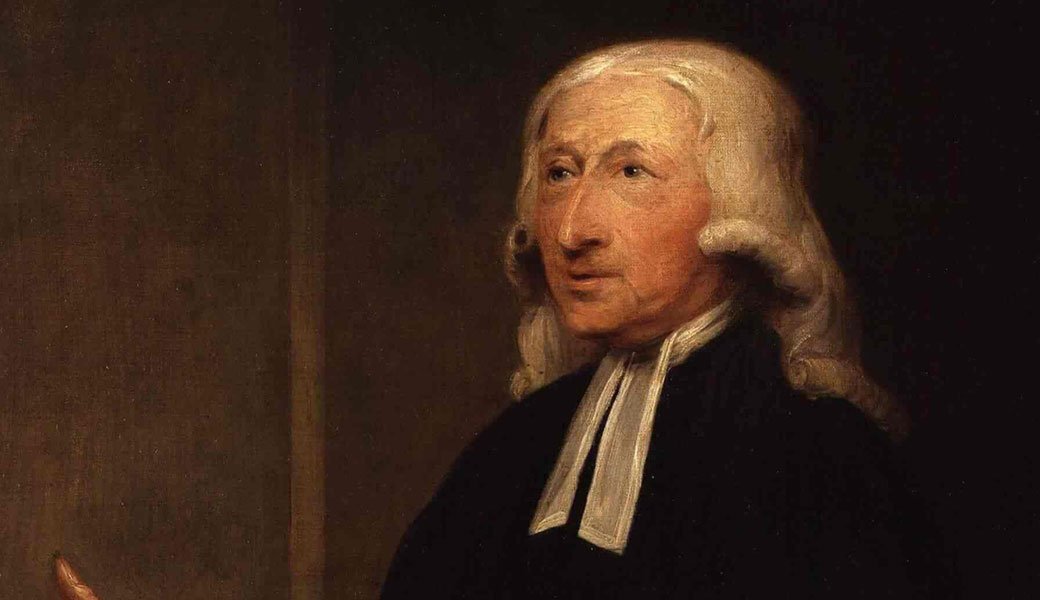
Family Life
On June 17, 1703, in the village of Epworth, twenty miles north of London, John Wesley was born and raised with seven sisters and two brothers by Samuel and Susanna (Annesley) Wesley. The fifteenth of nineteen children, he was the third son to be named John Benjamin as two sons born earlier had died. Seven other children born into the family did not survive birth or infancy, which left ten children to be raised together at home.
John’s father served as rector of St. Andrews Anglican Church in Epworth while Susanna, youngest of twenty-five children, attempted to shield John and his siblings from real life by teaching them from home. The Wesleys also saved money by keeping the children at home, as sending them to school was not something their large family could afford.
-
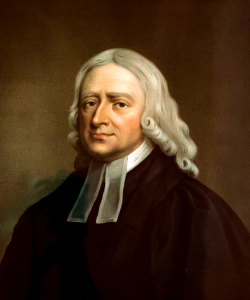
Painting of John Wesley
At a time when only one in four women could sign their name, John’s mother, Susanna, could read and write both English and French. She also loved to debate Biblical theology. Determined to raise her children in a cultured, God-fearing home, she forbade them to play with local children out of fear they would learn “coarse ways” from them.
The Wesley family school week ran Monday to Saturday from 9:00 to 5:00 with a two-hour break for lunch. Susanna taught the children to memorize large sections, sometimes entire books, of the Bible, which was their only textbook.
Perhaps even stricter, John’s father, Samuel, was a stickler for obeying church rules and was a self-appointed expert at pointing out other people’s wrongs. He insisted that “sinners” in his parish publicly confess their sins and outwardly express regret by standing barefoot for hours on the church’s stone floor.
Surviving a house fire at the age of five, John lived with a local family for one year until Samuel and Susanna could financially afford to bring him home. Only two of the children stayed at home that year while the rectory was rebuilt of brick to protect it from future harm by fire.
At age eleven, John was sent to boarding school. It was there, at the Charterhouse School in London that John was eventually offered a scholarship to attend college. On June 14, 1720 John began college classes at Christ Church in Oxford where he found course work easy, giving him ample time to enjoy boating, chess, theater and tennis.
Early Ministry
Though he came from a long line of distinguished ministers, John wasn’t sure he wanted to follow in their footsteps.
Just before graduating, however, John spoke with a college porter who talked of being grateful to God for giving him life and a heart to love and serve God, though he had nothing to wear, nothing to eat, and no bed to lie upon. The porter’s comments caused John to wonder if, perhaps, the porter had found the secret for righteous living which, to that point, seemed to have eluded John.
So, John began to ponder. Was it enough to believe in Christ or did a Christian have to perform good works to prove he or she was saved? He talked to Lutherans and Calvinists and wrote to his mother seeking wise counsel, but eventually concluded that he did not know the answer.
By the time he graduated in 1724, John knew his future was in the church. He immediately signed up to study toward a master’s degree.
Though short and not particularly handsome by the day’s standards, John attracted young women who were enamored by his seriousness of faith, his intelligence, and the fact that he accepted women as his intellectual equals. One of the women he met suggested he read “The Imitation of Christ” by Thomas a Kempis. Upon completing it, John determined to become a “whole Christian” with a heart completely changed by the love of God.
With a specific goal in mind, John developed a list of rules to live by in order to become a “whole Christian.” His “General Rules” included the following:
- Begin and end every day with God; sleep not immoderately.
- Employ all spare hours in religion, as able.
- Avoid drunkards and busybodies.
- Never on any account pass a day without setting aside at least an hour for devotion.
- Avoid all manner of passion.
- In every act reflect on the end.
- Begin every important work with prayer.
On October 19, 1725, at twenty-two years of age, John was ordained as a minister in the Church of England. After a short time serving as a teaching fellow to Lincoln College in Oxford, he returned to Epworth to assist his father in his curate as his father had suffered a stroke and lost the use of his right hand.
John helped his father finish writing a huge commentary on the book of Job but also became interested in a pretty young woman who his father subsequently banished from the rectory in hopes John’s mind would remain focused on spiritual matters.
The “Holy Club” based on Works
John’s brother, Charles, formed the “Holy Club” at Christ Church with only three other male members, but John happily joined and quickly became the leader. Soon they were meeting seven nights a week from 6:00 – 9:00 PM to study the Bible and examine their own behavior as well as the behavior of other members of the group.
John wrote a list of questions for the members to review each day. Soon, other students at Oxford procured the list and began mocking the members and calling them Bible Moths, Bible Bigots or Methodists.
The name “Methodists” stuck because they seemed to have a method for everything, which was likely a learned style or behavior from John’s upbringing as his mother was very methodical, overly-strict and punitive.
One student went so far as to make up the following rhyme about the Holy Club:
By rule they eat, by rule they drink,
Do all things else by rule, but think –
Accuse their priests of loose behavior,
To get more in the laymen’s favor;
Method alone must guide ‘em all,
Whence Methodists themselves they call.
John was secretly pleased with the students’ “persecution.” It made him feel he must be on the right track since Jesus said, “Blessed are ye when men shall revile you, and persecute you and shall say all manner of evil against you falsely, for my sake. Rejoice, and be exceedingly glad; for great is your reward in heaven…” (Matthew 5:11-12a)
In April, 1735 Susanna sent an urgent message to her children to inform them that their father’s health was failing. John felt certain his father would pressure him to take over as rector at St. Andrew’s but his father surprised him by saying, “The inward witness, son, the inward witness, is the strongest proof of Christianity.” John received his father’s blessing to pursue his own path and never forgot his father’s final words.
After the funeral the Wesley family split up and went in many different directions.
North American Ministry and Tribulation
-

John Wesley Preaching the Bible
Soon after, John was invited by James Oglethorpe to Savannah, Georgia in North America to serve as vicar at a chapel there. While Oglethorpe’s desire was to have John minister to the spiritual needs of colonists in Savannah, John was more attracted to the potential conversion of the Indians who inhabited the Georgia colony.
John agreed to go and persuaded his brother, Charles, and two other young men to accompany him. On October 14, 1735 the four men boarded the “Simmonds” to sail across the Atlantic Ocean to North America.
John appointed himself as spiritual leader of the four men and set up a strict routine for them to follow during their four month travel.
4:00 – 5:00 awaken to pray privately
6:00 – 8:00 read the Bible together
8:00 – 12:00 breakfast with passengers, public prayer, studies, sermon writing and teaching
12:00 – 13:00 group of four men meet to discuss morning routines
13:00 – 17:00 lunch with passengers, followed by private spiritual conversation with passengers and teaching children Anglican catechism.
17:00 – 18:30 – private prayer and group Bible reading
18:30 – 19:00 dinner with passengers
19:00 – 20:00 join Moravians for their hour-long prayer service
20:00 – 22:00 meet to discuss how well they followed their afternoon program
22:00 to bed for six hours of sleep
In addition to their strict schedule, John decided sometime during the four-month trip that the four men would forego the meat and wine served with meals, then later decided they would go without eating at all during the dinner hour.
One night in the midst of a fierce storm, John noticed that the English people on the ship were in constant fear and unrest. When he went to the Moravians’ cabin to check on them, however, he found them in the middle of a church service!
John wrote in his journal, “…the sea broke over, split the mainsail to pieces, covered the ship, and poured in between the decks, as if the great deep had already swallowed us up. A terrible screaming began among the English. The Germans looked up, and without intermission calmly sang on. I asked one of them afterward, ‘Were you not afraid?’ He answered, ‘I thank God, no.’ I asked, ‘But were not your women and children afraid?’ He replied mildly, ‘No, our women and children are not afraid to die.’”
Though he had preached numerous sermons on trusting God in every circumstance, John knew that day that he was as afraid of dying as the rest of the English, and he began to doubt his call as a missionary to the Indians in Savannah.
To the relief of everyone on board, the Simmonds dropped anchor at the mouth of the Savannah River on February 5, 1736.
Despite his lack of faith during the storm at sea, John took up his post as vicar. Preaching his first sermon on March 7, 1736, he outlined his “rules” for the community of believers including 1) Those who had not been baptized in the Church of England could partake of Communion, 2) Anyone wishing to take Communion had to give notice the day before so John could assess the state of their soul, 3) John would not conduct funeral services for anyone who was not an Anglican, and 4) Women should appear in church wearing plain, woolen or linen dresses. Those with jewelry or elaborate clothing styles should stay home.
John made many enemies because of his rigid rules and was viewed as strict, unyielding, and heavy-handed.
Attempting to imitate his brother, Charles instituted a strict code of conduct for members of his church at Federica, but found himself sick and depressed after being falsely accused of having two mistresses. Upon visiting his brother, John persuaded Governor Oglethorpe to allow Charles to return to England. In July, 1736, Charles went home.
John Wesley’s Celibacy
John continued to minister in Savannah but began to struggle with his desire for female companionship when he met an eighteen-year-old student named Sophia Hopkey. Despite his vow to remain unmarried as Paul did in the New Testament, John visited Sophia four times a day to supervise her schoolwork and walk with her practicing French along the way.
Tormented with the desire to marry Sophia, John sought advice from Charles Delamotte, a friend who ran the school Sophia attended. Charles suggested they “draw lots” like the Moravians did to see what God’s will was.
Charles got three slips of paper and wrote:
“Think not of marrying this year.”
“Think of it no more.”
“Marry.”
Then he put them in a hat. John reached in and pulled out the one that said, “Think of it no more.” Devastated, John believed God had spoken to him, and he must obey.
Sophia eventually accepted a proposal from William Williamson and wed without telling John. In his humanity, John allowed his sadness over letting Sophia go to lead him to publicly embarrass her by refusing to offer Holy Communion to her on August 7, 1737. The next morning John received a formal complaint from William and Sophia delivered by the Savannah court recorder.
John followed the constable to the courthouse where charges against him were read. Then he was released with bail and admonished not to flee the colony. His court hearing was set for early December, but on December 2, 1737 John left the parsonage in the early morning hours while it was still dark. Three men rowed him across the river to South Carolina, then hiked for several days through dense woods to reach Port Royal, South Carolina.
John’s Return Journey to England
No ships returning to England were anchored at the time, but on December 22, 1737 John finally boarded the “Samuel” for his return. A ship named the same as his father, Samuel, was about to take John home.
The dreams John had for himself when he sailed to Georgia had died, and soon he was seasick and depressed as they left port. Once again at sea a fierce storm blew and waves crashed against the ship and John feared for his life. Doubting reassurance of his eternal home in heaven, he wrote:
“…I can talk well; nay, and believe myself, while no danger is near; but let death look me in the face, and my spirit is troubled. Nor can I say, ‘To die is gain!…’ In a storm I think, ‘What if the Gospel is not true?’ (Then I am of all men most foolish.)”
John fell into despair and noted himself to be a “child of wrath” and an “heir of hell” in his journal.
Christmas 1737 and New Year 1738 passed aboard ship as John dreaded landing in England. What would he tell his family and friends? What would he do for a living?
On February 1, 1738 the “Samuel” disembarked at Deal in Kent, England. Not wanting to face friends at Oxford, John headed for London and stayed with his friend, James Hutton.
True Conversion by Grace
Six days after arriving in England John met Peter Bohler, a Moravian enroute to Savannah, Georgia. The men spent hours talking about the state of John’s soul and how a person is truly saved to live a godly life.

Statue of John Wesley
John’s strict ideas found no agreement with Peter who said, “My brother, my brother, that philosophy of yours must be purged away.”
Together John and Peter visited John’s brother, Charles, who readily accepted Peter’s invitation to salvation by grace. But Charles’ acceptance of Peter’s message upset John who continued to question Peter. John was convinced a believer must prove their faith through good works.
Soon after, as John shared the Gospel with a man in prison who was scheduled to be hanged the next day, John realized the truth of the salvation message. The prisoner had no time to do “good works” to prove that his heart and life were changed.
At that moment John became convinced, along with the prisoner, that God’s love was great enough to reach even a man who could perform no “works” after his conversion.
Soon after, on May 25, 1738, John attended a society where Luther’s preface to the Epistle to the Romans was being read aloud. John wrote in his journal:
“…while he was describing the change which God works in the heart through faith in Christ, I felt my heart strangely warmed. I felt I did trust in Christ, Christ alone for salvation: And an assurance was given me, that he had taken away my sins, even mine, and saved me from the law of sin and death.”
John finally realized his heart’s desire to be a true Christian, and he felt compelled to tell others how to be “saved by faith” too.
Persecution and Banishment
Less than one month after his conversion, John fled to Herrnhut, in Saxony, Germany to the home of Count Zinzendorf and the Moravians after much persecution by English believers and enduring banishment from preaching at churches in and around London.
Again, John sought his mother’s blessing as he had before sailing for North America to preach, but Susanna would not give it.
Returning to England, John preached wherever he was allowed to focusing on the message, “By grace you are saved through faith,” though the Church of England did not agree with his message. By the end of the year John was allowed to preach in only three or four Church of England pulpits.
Open Air Preaching
The Methodists still looked to him as founder and unofficial leader, but John remained unsure of what God had planned for him and the future of the Methodist movement.
As he had done with Sophia, the love of his life, John chose to draw lots in late March, 1739 when he was invited to preach to coal miners at Kingswood on the outskirts of Bristol. John did not want to go, though George Whitefield, his friend and fellow preacher, wrote to him of speaking in open-air meetings to as many as 20,000 people at one time.
When the slip of paper John drew from a hat said, “Go” or “Bristol,” depending on the source you get your facts from, he accepted it as God’s will and set out for Bristol. Little did John realize that George was about to announce his decision to head for the Georgia colony to build an orphanage and publicly hand his preaching duties over to John.
On April 1, 1739 George Whitefield preached his last sermon in the fields. On that same day, in the afternoon, John Wesley preached his first sermon in the open air to about 3,000 people. As a result of his growing love for the poor and his success evangelizing in the open fields, Wesley agreed to purchase and remodel an old foundry on City Road near Moorfields in London. There he established a new group called the “United Society” with a set of rules that became the model for the Methodist movement from that time on.
When George Whitefield was approached by a man later in life who called Whitefield a Wesleyan, Whitefield agreed and expressed but one regret from his days of evangelizing; that he failed to “preserve the fruits of his labor.” Whitefield evangelized thousands of people throughout his life, but neglected to bind them together to support one another as they sought more of God. It was Wesley who organized believers to encourage fellowship and spiritual growth.
Wesley provided five groups for people to consider after responding to his preaching:
- Society, referred to today as the congregation, an assembly of all interested people. Tickets were required to attend and were reissued depending on the believer’s continued growth in Christian living as determined by one of the Class leaders.
- Class Meeting – a small group of 10-12 members trying to follow Christ in their day-to-day life. It was NOT voluntary. Each Society member was assigned to a specific Class.
- Band – a smaller group of homogenous people who desired to deepen their spirituality; men or women, married or single, young or old.
- Select Society – an elite group of people training to be leaders.
- Penitent Band – a group for those trying to overcome all of their sinful habits and work toward perfection, which was primarily considered to be the love of God and of neighbor.
Wesley’s style of organization is likely one of his most enduring and meaningful contributions to church life. Various Small Groups that aid spiritual growth and provide prayer and accountability are still active in churches today.
While John preached, his brother, Charles, developed hymn writing skills helping many men and women who could not read to hide the truth of the Word of God in their hearts. His songs gave them the ability to express their belief in Christ in worship.
Extreme Persecution for John Wesley and his followers
As poverty increased in England, poor people banded together to steal, fight and harass others, particularly the Methodists. Anti-Methodists riots endured several years, eventually resulting in the martyrdom of William Seward, a traveling preacher. John and others were deeply impacted by the loss.
Despite the danger, however, Wesley and his band of twenty lay preachers lived lives of true discipleship and continued to preach the Good News saving souls by the thousands. Wherever he went, John tried to birth social programs to help the poor find meaningful employment, help orphans find a home, and give congregations godly purposes for living that benefit the less fortunate.
After his mother, Susanna, died on July 23, 1742, John mourned the loss of his confidante and spiritual advisor and poured himself into his work.
Facing opposition from many Church of England clergymen and their congregations, Wesley began a life of extreme persecution. He was stoned twice, pelted with manure, harassed when preaching at outside meetings, and even threatened with death. Sometimes church bells were rung nonstop to try to drown out his voice as he preached. Despite persecution, however, Wesley continued to preach, trusting God to protect and provide all that he needed.
John Wesley’s Legacy & Social Programs
In November, 1745 John proved his devotion for all followers of Christ, no matter the gender, when he appointed Grace Murray, a young widow in Newcastle, to take charge of the Methodist orphan house in his absence. Likely because of his mother and his college experience, Wesley viewed women as equals in many ways and encouraged them to grow in knowledge and faith.
Soon after John opened a clinic in London at the foundry, the main Methodist location where poor people could see a doctor and receive medicine; opened a boarding school in Kingwood for the sons of Methodist preachers to educate a new generation of Methodists, and agreed to operate and oversee a day school for the coal miners’ sons.
In 1746 John started a fund to give short-term loans to poor Methodists. The loans were for one pound per person with a three-month payback period. In the first eighteen months, two hundred twenty-five people took advantage of the program. John encouraged everyone to reach out and help the poor.
A Second Candidate for Marriage
Though John and his brother, Charles, had sworn off marriage agreeing that a man can serve God better as a single man, Charles met a woman he considered a candidate for wife when he was forty years old. Sally Gwynne was twenty-three at the time and did not impress John when Charles introduced them. John was so unimpressed, in fact, that he drew up a list of candidates he felt were more suitable for Charles before he departed for a trip north.

Portrait of John Wesley
Little did John know that he would soon be nursed back to health from a migraine by Grace Murray, the attractive widow he left in charge of the Newcastle orphan house, and would begin to think of marriage himself.
Eventually John agreed that Sally was God’s woman for Charles and on April 8, 1749 John officiated the nuptials of Charles and Sally before he and Grace set off for Ireland to minister.
Sadly, John was not open with his own feelings for Grace and was soon competing for her affections with John Bennet, another Methodist preacher. A short time later, Grace chose to marry John Bennet and John Wesley’s heart was broken for the second time.
John’s Marriage to Molly Vezille
Finally in early 1751 John met Molly Vezeille, a forty-one-year-old widow with four grown children who nursed John back to health after he fell on a patch of ice and sprained his ankle. On February 19, 1751 they married, but barely one month later, John left to resume his life of active ministry.
In his absence he wrote Molly many letters, but she soon grew tired of the loneliness. Attempting to strengthen their marriage the following year, she left on a four-month trip to northern England and the Midlands with John, but after six weeks returned home to nurse her ill son.
In November, 1753 John contracted an infection in his lungs from preaching in freezing outdoor temperatures and was convinced he was going to die. Though he had experienced many victories and blessings of God, John seemed incapable of appreciating the thousands of souls who were saved, the poor ministered to, and the orphans loved and cared for as a result of his work.
God had accomplished so much through him, yet John wrote the following epitaph for his tombstone:
“Here Lieth the Body
of JOHN WESLEY
A brand plucked from the burning
Who died of consumption in the fifty-first year of his age
Not leaving after his debts are paid
Ten pounds behind him.
God be merciful to me, an unprofitable servant”
Fortunately John did not die from the infection and began to preach again in March, 1754.
In April, 1755 Molly made a second effort to accompany her husband on an extensive tour of the Midlands and northern England; but the travel proved to be too difficult for her. Sadly, John’s marriage continued to deteriorate as he traveled and preached and Molly was left alone at home.
When she reached the point of extreme disappointment, Molly took the money she inherited from her first husband and returned to an independent life.
John’s Thoughts on Methodism
Though John continued to travel and preach, he never intended to be the founder of a new denomination outside of the Church of England. John preferred to be labeled a “reformer” within the existing state church. At the annual Methodist leaders’ conference in 1755 John outlined sixty-two reasons why societies should stay within the Church of England but also expressed four reasons that would serve as grounds to separate from them.
His four reasons stated that Methodists should always be free to 1) preach outdoors, 2) pray without using the Book of Common Prayer, 3) form and manage their own societies, and 4) allow laymen to preach. John further stated that if the Church of England tried to restrict any or all of the above activities, Methodists might need to leave and form their own denomination.
Charles disagreed with John’s potential separation and the four reasons John stated as grounds for that separation, so they parted ways.
Final Thoughts
Upon returning from the 1759 Methodist Conference where Christian perfection was the focus, Wesley published a tract titled “Thoughts on Christian Perfection” in which he admitted that “perfect Christians” make mistakes, even when they are totally devoted to God. Though as a college student at Christ Church, Wesley was obsessed with Christian “perfection,” more than thirty years later he accepted Christ’s death for his sins. Christ’s grace was his not because of good works but because of the gift of Christ’s sacrifice on the cross.
Wesley preferred to refer to mistakes as “transgressions” instead of sins and used the term “grows in grace” indicating his movement toward sanctification being a life time process instead of instantaneous as he once firmly declared. John finally understood the active life of the grace of God; that it is given not only through the death of Jesus but is also the power that leads believers to God and purifies their hearts and minds throughout their lives.
In 1763 John wrote “Large Minutes,” statements of Methodist beliefs and practices to guide lay preachers in conduct and decision making. Despite his advanced age, John rode about three thousand miles per year on horseback, preached over eight hundred sermons, and encouraged the one hundred preachers under his care. He remained determined to “preach the Gospel to ordinary people and spur them on to live holy lives.”
Frugal Living
Near the time of his sixty-seventh birthday Wesley gathered everything he had ever written and published it in a 32-volume work titled, “Collective Works.” He had earned a fair amount from his books – up to 1,400 pounds per year – but still preferred to live simply. He kept thirty pounds to live on, the same amount he lived on in college, and gave the rest to Methodist charities.
When questioned about his frugal habits, John replied, “Money never stays with me, it would burn me if it did. I throw it out of my hands as soon as possible, lest it find a way into my heart.”
Over the course of his life Wesley earned 150,000 pounds from his writings but contributed almost all of it to various charities and died with little money left.
Encouraging Women to be Preachers
In 1770 Methodist women in England began to take on greater roles in the societies. John encouraged them to use their preaching gifts without crossing any lines to avoid being accused of preaching by the Church of England. He simply encouraged them to share what was on their heart. If it sounded like preaching, so be it.
His mother had modeled for him the power of “relationship ministry.” While Samuel, Wesley’s father, was in debtor’s prison for three months, Susanna shared stories and sermons about two Danish missionaries in the kitchen of the Epworth Rectory without publicly preaching from the pulpit. More people attended each week, enamored and curious about what the missionaries in the book Susanna read from would say or do next. Because of her faithfulness, the community at St. Andrews was transformed into a vibrant family of God.
John’s Final Years & Written Works
In August, 1773, at the age of seventy, John preached to 32,000 people – his largest single audience in the history of his life as a preacher.
A prolific writer, John published a Methodist magazine named “Arminian Magazine” beginning in 1778 while a new Methodist chapel, Wesley’s Chapel (City Road Chapel) was being built. He wrote most of the articles himself and used it as a platform to advance Methodist ideas and refute Calvinist thinking.
Two years later John published “A Collection of Hymns for the Use of the People Called Methodists.” It contained 525 hymns, including sixteen John wrote himself and more than 450 written by his brother, Charles.
Though they lived apart for many years, John’s wife’s passing in October, 1781 saddened him. Yet, he continued to travel 4,000 to 5,000 miles a year riding fifty miles or more at one time on horseback even after the age of eighty.

John Wesley in a Stained Glass Window
Finally, Wesley and the Methodists were no longer persecuted. Instead, he was honored wherever he went and considered a coveted guest. On February 28, 1784, nearing what he believed would be his final years, John penned “A Deed of Declaration” legally defining Methodism and the succession of the societies’ leadership and overseeing of trust property after his death.
On September 1, 1784 John ordained Thomas Coke as superintendent for the “Church of God under our care in North America” and sent Thomas back to the U.S with a letter granting American brethren the right to be “disentangled both from the State and from the English hierarchy at full liberty simply to follow the Scriptures and primitive church,” thereby freeing them from connection with the Church of England.
Then he rewrote the “Book of Common Prayer” calling it the “Sunday Service of the Methodists in North America.” The new version was shorter and replaced the terms “priest” and “bishop” with “superintendent” and “elder.” Throughout the remainder of his life, John continued to focus on ensuring an official break between Methodists and the Church of England planning in every way possible for independence of Methodists after his death.
A prolific reader and writer, John published countless books, magazine articles and hymns before he died. Throughout much of his life and publication, it seems that Wesley struggled between being more of a legalist with numerous rules to follow to attain “perfection” and being a Christian saved by grace, not works. By the time he reached his fifties, however, John’s written words began to reflect the heart of a man who had fully accepted the grace of God and the sacrifice of Christ to cover all sin, even his own.
When Charles died in March, 1788 he left a legacy of 6,500 hymns, many of which John published for him. Sadly, John was traveling in the north of England when Charles died and missed his brother’s funeral.
Confined to London in his old age in 1791, John continued to preach inside chapels and helped pay for the publication of African slave, Gustavas Vassa’s, autobiography. Upon completing the book, John dictated a letter to William Wilberforce, a Methodist convert and member of Parliament who was leading the opposition to England’s participation in slavery. In the letter John exhorted Wilberforce to remain firm, to “be not weary in well-doing.”
The following week on Wednesday morning, March 2, 1791, the leading members of the Methodist Church gathered at John’s bedside. He raised his arms and prayed, “Lift up your heads, O ye gates; and be ye lift up, ye everlasting doors; and this heir of glory shall come in!”
That day, at the age of eighty-seven, John took his final breath. His body was laid in honor in City Road Chapel (Wesley’s Chapel), where Wesley lived the last twelve years of his life. Ten thousand mourners passed by his coffin to pay last respects.
In his lifetime, John traveled more than a quarter of a million miles on horseback and preached over 40,000 sermons. His simple message of love and holy living continues to influence countless lives around the world today.


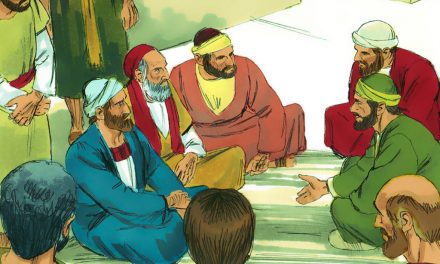
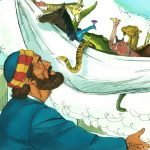
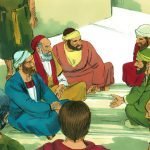

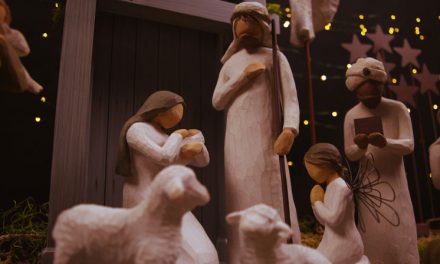



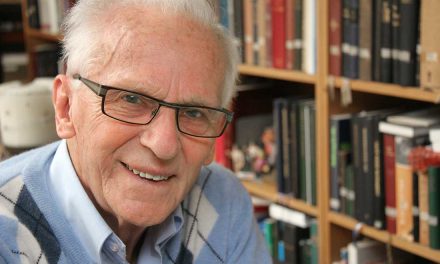

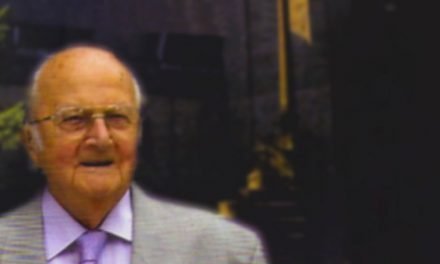
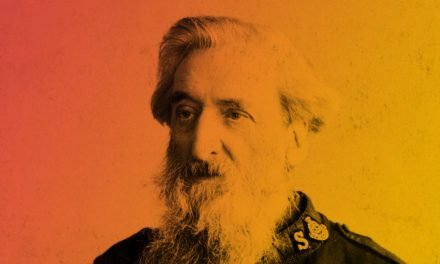
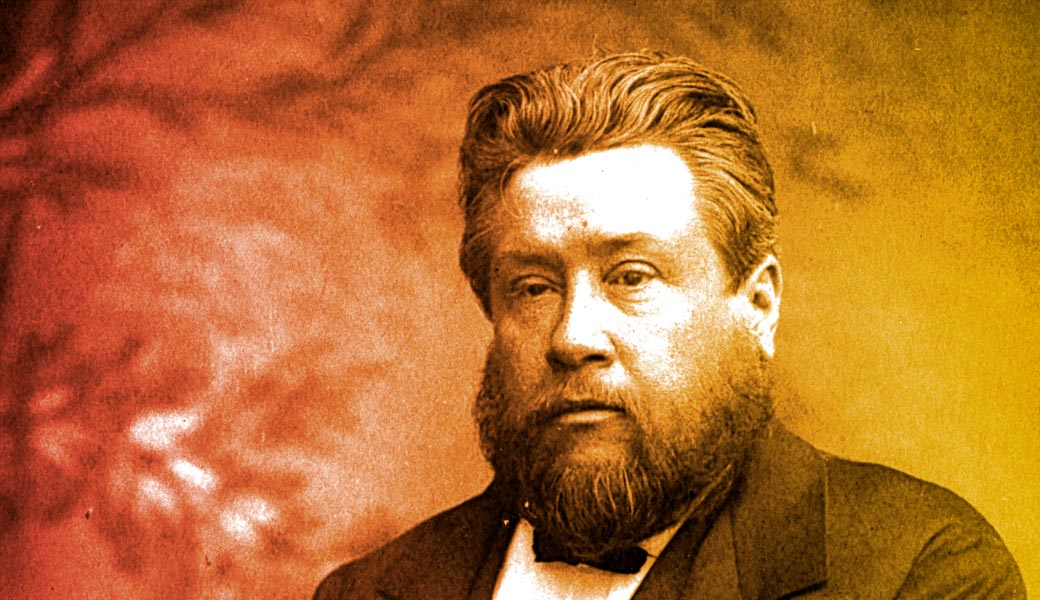

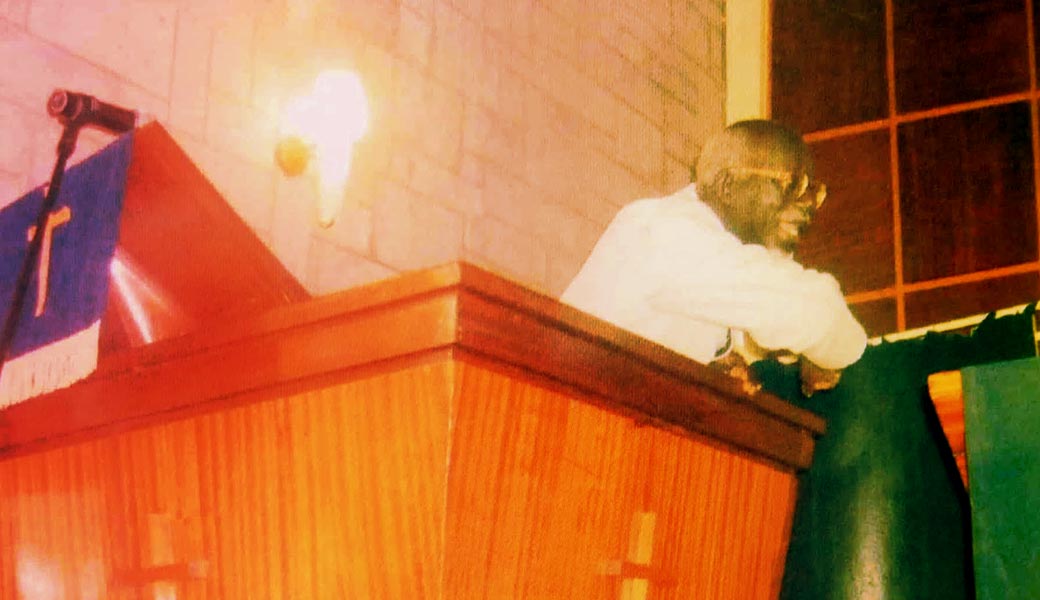


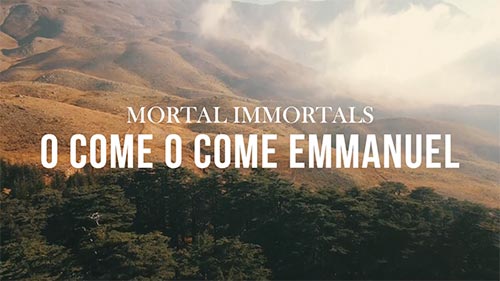
Very Intresting! It was perfectly published too.
Praise the Lord for such a Godly servant. Was inspired to know about John Wesley. I am thrilled to know today how the name Methodist has come. All the glory to God.
Thank you Donnafor your study on john wesley. He was a man of courage to follow the scriptures in spite of the Anglican teachings around him. Jesus said, “and you willknow the truth and the truth will set you free” Blessings.
I am inspired by Wesley’s holy living. Thank you Donna for sharing.
Thank God for the work of this mighty man. His approach to money is quite encouraging. Use little and invest more into God’s work.
I am a Methodist myself and a Fijian – Fiji citizen. I am really thankful of John Wesley biography and that has given me an insight of how Methodism started. It has taught me a lot of things on the spiritual aspect of my life, and that is to live HOLY. It was the upbringing that had led to his devoted life into his ministry and never gave up till the day the Lord called him home. What a blessing to read an extraordinary life life of a great man of God.
I am not only blessed by going through this research but have thrilled by so many truths and fact about the founder of Methodism.
Thanks Donna Wyland for your work. It has impacted my life and will do for many as I share your works by preaching it and telling its story like our mother of Methodism (Susanna) did.
Blessings.
I’m encouraged to raise my children in a godly way. I will be praying and talking to them about God more often
It is so sweet to end strong and well
Thank God for great mothers who will always be their best inspite of challenges. As a mother, this story challenges me to arise and be a helper of my children’s destiny
I submit to Almighty God all the praise and all the glory for His great grace in revealing that the ” Righteus shall live by faith” and saved to fulfill works of faith to advance the “Gospel of Christ”
John Weley has shown this by being a living example.
I firmly believe our 20th century global evangelist Dr Billy Graham has replicated the work and humble wage earnings which John Wesley enjoyed!
To God be the glory for these two untiring servants who lived until their late 80’s and now Dr Graham in his 100th. year. O’h may all the glory go to Almighty God
Amen and amen!
Thank you, Donna for your research & writing. I now have a much more complete understanding of this great man’s life & Christian work
I am blessed through the Wesley testimony;from his early belief of works and rules,to his latter;grace through faith. am encouraged by his zeal and passion for God all those years. thank u Donna bse my soul is lifted to some spiritual awakening and i have been inspired by this testimony
I think this was a very good picture of John Wesley. I have begun reading a lot about Mr. Wesley, and what I heard talked a lot about was prevenient grace, justification, sanctification, regeneration, adoption. He did not seem to understand about the grace of Christ for his salvation until later in life.